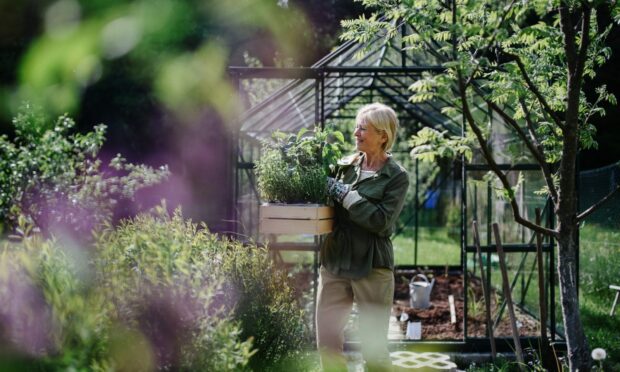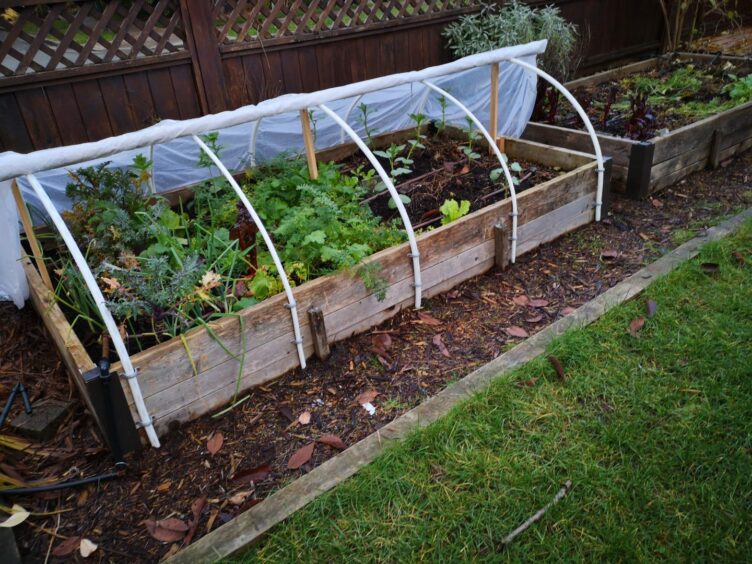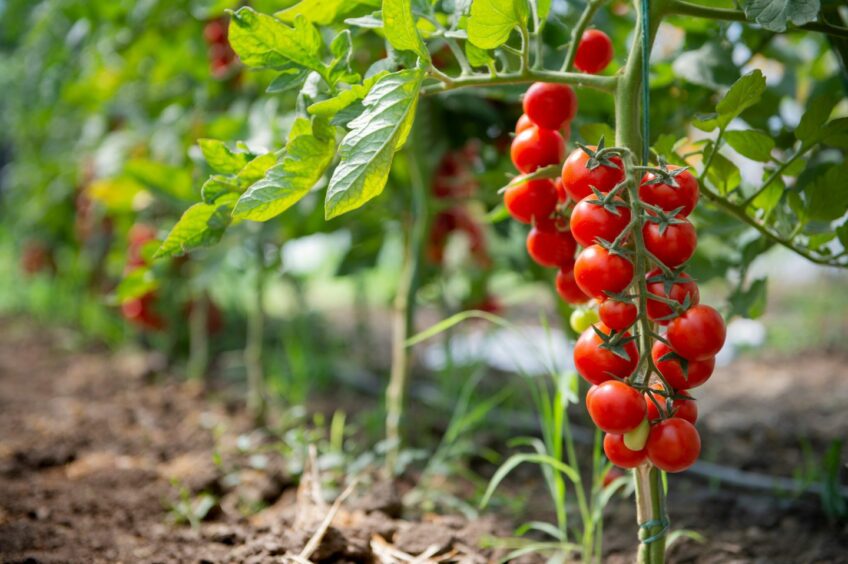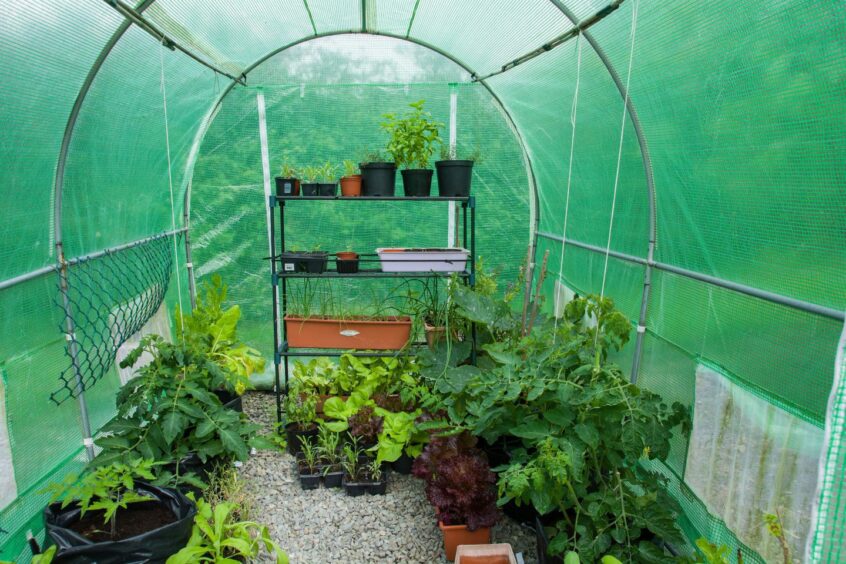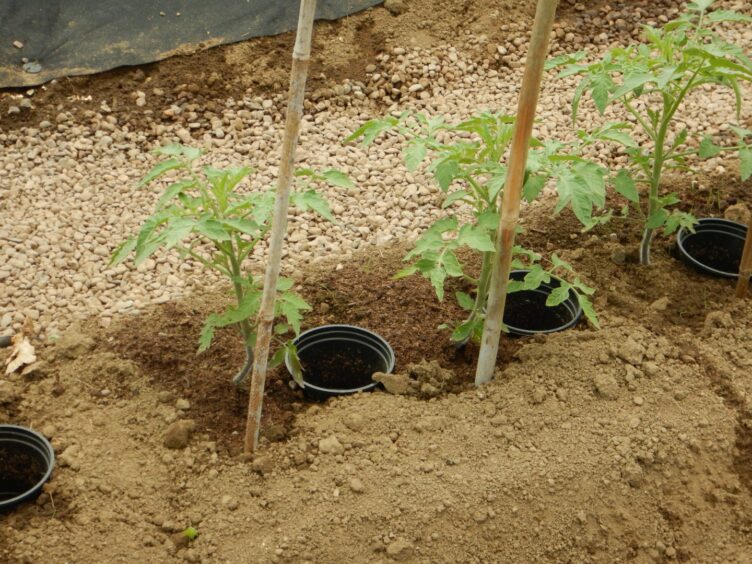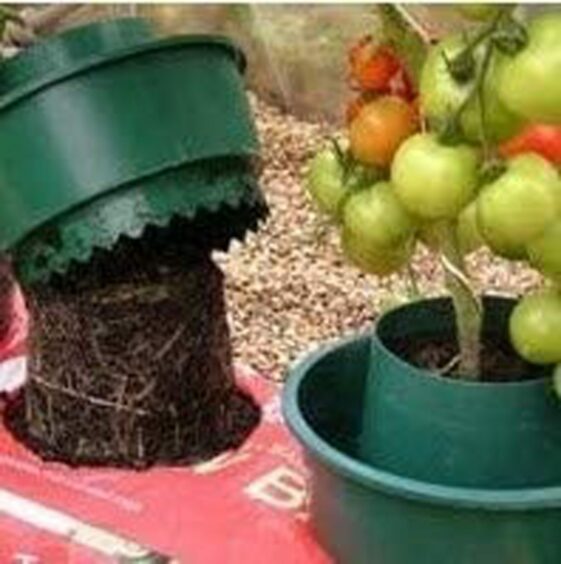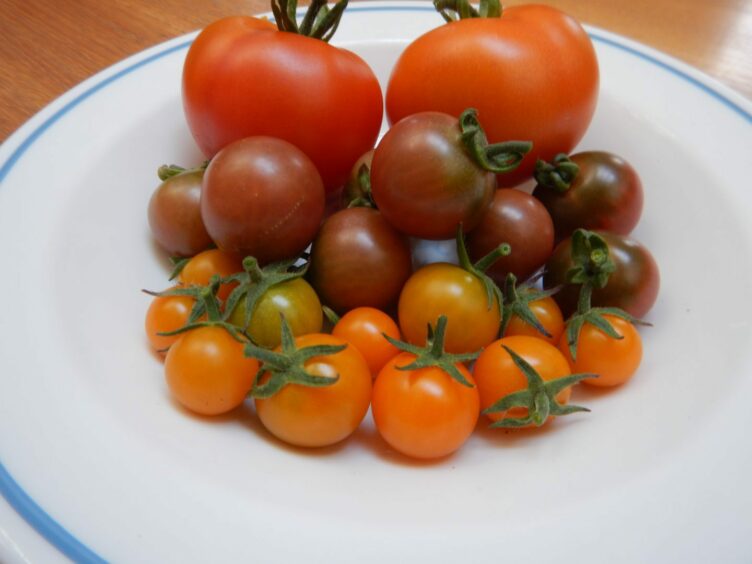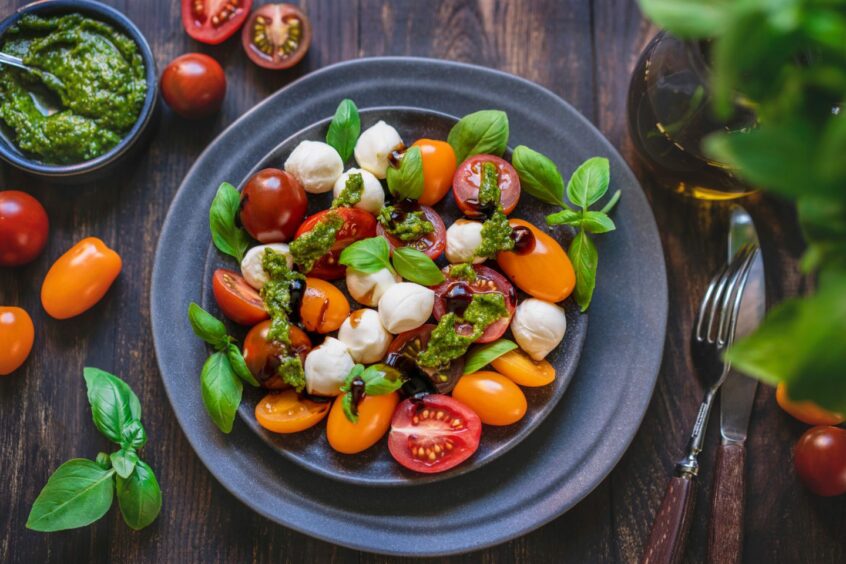Right now, some of you may be planting up your tomatoes in the greenhouse/polytunnel/garden room whilst others may still be swithering about how to go about the job.
Truth to tell, there are a number of ways in practice.
Firstly, however, let’s put growing outdoors off the agenda because our variable weather conditions mitigate against successful cropping – maybe one day though.
That said, I have no doubt that somewhere in Scotland, someone will be growing tomatoes outdoors, perhaps in large pots which were planted up indoors and moved outside when the long, balmy summer days are with us.
To provide basic conditions, the first step to consider would be to grow them in part of the vegetable garden but in a polytunnel.
Growing conditions
This works because you do have some control of the growing conditions.
Over the years, I have visited many an allotment where this was standard practice with some of the growers.
There is, however, a serious problem to be considered with this technique.
Growing in the same soil year in and year out is likely to see a build-up of root diseases particular to that crop, hence the reason why we recommend a rotation programme for our vegetables, and in this context tomatoes are no different from cabbages, carrots or celery, in fact they are related to potatoes and therefore subject to the same range of root problems.
The answer is simple, of course, move the polytunnel on to a fresh area each year, just as part of the normal rotation.
I don’t think so but, have I left best till last?
Yes indeed, there is another technique used to overcome the potential problems by growing in the same piece of ground year after year.
Grafted tomato plants
You may be happy to pay a little extra to buy grafted tomato plants because they are specifically designed to be able to grow the crop in the same soil year in and year out.
The point being that the rootstock is resistant to soil-borne fungus diseases and some nematodes (eelworm).
It is a technique developed for commercial growers as an alternative to chemical soil sterilisation.
It is claimed that grafted plants are more tolerant of drought conditions and overwatering.
I cannot comment further on that because I have never resorted to growing grafted tomato plants – it is maybe time I had a go.
I should add that, historically, it was standard practice to grow commercial tomato crops in the soil in glasshouses every year BUT the soil had to be sterilised during the winter months in between growing seasons.
That was accepted general practice when I came in to the industry in the early Fifties. Over a period of several weeks during the winter months, we slaved over steam sterilising the soil to a depth of about 45cms in these huge glasshouses.
Because of spiralling costs, the technique changed from sterilising the entire crop area to just sterilising the growing strips then methods of chemical sterilising were developed and indeed proved to be quite successful.
Using grafted plants came to the fore for a while then we changed to growing in growbags.
These were filled with a peat-based compost and then polystyrene granules. This last technique meant that the plants were fed with liquid feed from day one.
Growbags and growpots
In the Eighties and Nineties, our crops at Glengarioch Distillery, grown in glasshouses and tunnels, heated with waste energy from the distilling process, were all grown in growbags.
And so, methinks the present most popular method remains using growbags.
There is a twist to the system which I find successful.
That is to cut three holes on the top of the bag then set special bottomless plastic pots (growpots) on top, one over each hole.
These pots can be filled with your usual potting compost before planting.
Each pot has a deep saucer pierced with holes which make watering much more efficient.
Being a traditional old codger, I tend to grow the standard so-called salad varieties like Moneymaker and maybe one or two cherry types but I don’t bother with the Beefsteak varieties.
To my mind, the salad types are more prolific and tastier.
Everyone to their own.
Now, one last point about training.
It is customary to grow indoor tomatoes as a single upright stem, supported by stout jute twine (at one time called tomato fillis).
Be sure that the twine is twisted round the plant stem, passing it under a leaf joint to prevent the plant from slipping.
You are NOT twisting the stem round the twine and furthermore, DON’T pass the twine under the stalk supporting a truss of fruits – just think of what happens should the stem slip – yes, you will strangle the fruit truss.
